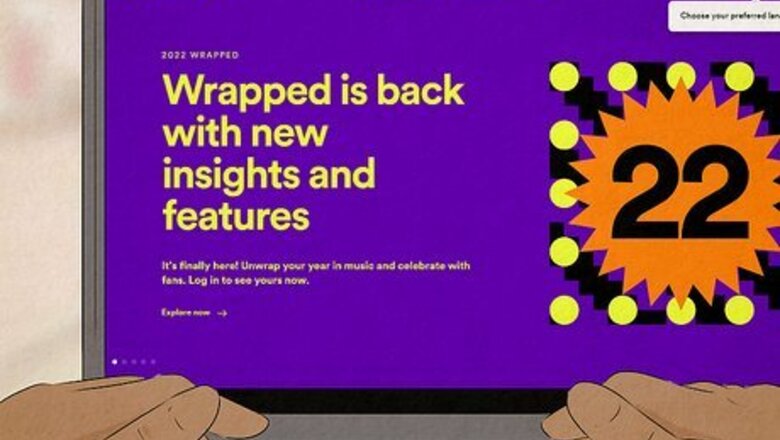
views
- Create and fill out your artist profile on Spotify with things like an artist profile picture and your artist bio in order to establish your presence on the platform.
- Select your best song and pitch it to the Spotify playlist editors via their official pitch form, and include things like genre, mood, and your music marketing plans.
- Reach out to users who curate popular playlists on Spotify and ask them to feature your own songs.
- Build and maintain your social media following, create your own playlists, and perform live shows to garner a fanbase and get noticed by Spotify editors.
Pitching to Spotify
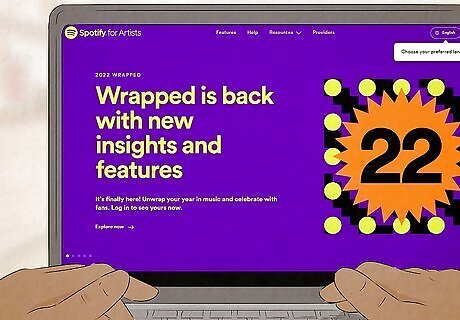
Create an artist profile on Spotify. Before you pitch to Spotify, you’ll need to have a presence on their platform. Sign up for a Spotify artist account (it’s free!) and fill out your profile thoroughly. Be sure to include things like a profile picture that represents your public image, a profile header, and an artist bio that tells both Spotify staff members and individual users a bit about yourself and the music you make.
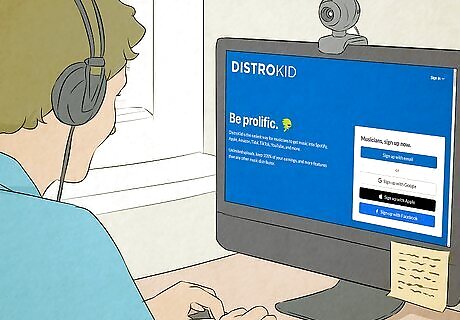
Upload your music to Spotify via a distributor. Spotify doesn’t let just anybody upload music; you’ll need a distributor that uploads your music for you. Use a service like DistroKid or TuneCore to put your music on Spotify. Upload your song files (including the .mp3 and album art) to the distributor, then have the distributor release the song on Spotify.
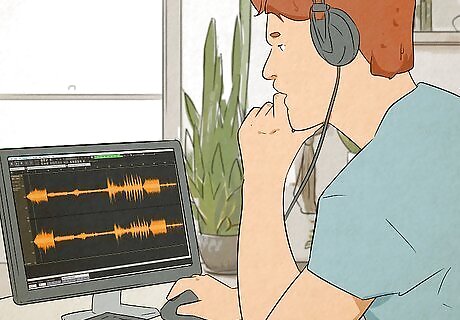
Choose a song to pitch. You can only pitch one song at a time, so it’s important to pitch the right song. What’s the right song? Whichever one you love the most, or the one you can imagine an entire crowd singing along to—Spotify editors hand-pick songs that they enjoy themselves. That said, you can only pitch music that’s been uploaded to Spotify, but which hasn’t been officially released or made public yet. If you have a planned release date for your song, pitch the song at least 7 days before it’s released on Spotify. If your song is accepted, this will also place it on user’s Release Radar algorithmic playlist.
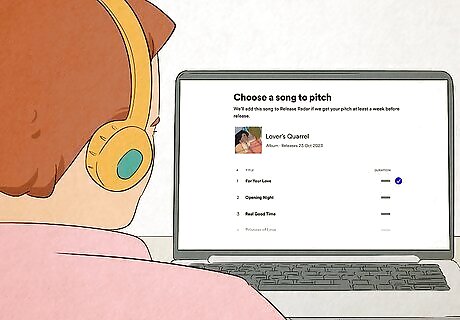
Submit the song on Spotify’s pitching portal. Navigate to Spotify’s playlist pitching page and select your song. Then, fill in things like the song title, the genre, mood, audience, and what you hope to accomplish by pitching this song. It’ll also ask you about your own marketing plans. The more information you provide, the better the chances that your song will be chosen for an official Spotify playlist. Providing the right tags is especially important here, since that’s how Spotify’s editors will know which playlist to place your music on. Get as specific as you can, including subgenres and what instruments are prevalent in the song. To give your song a more particular identity, you can include technical tags that address the language of the lyrics, cultural influences, and your hometown or the city you’re associated with.
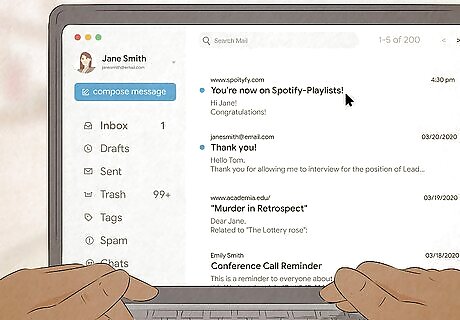
Wait for an email verdict. If your song is selected, Spotify will email you to let you know. Otherwise, they might keep the song in their editor’s rotation to select another time. There’s no set timeframe on this; we know, the wait is excruciating. But the good news is that Spotify’s editors hand-pick every song, so you know that your song is being listened to by a real person. Alternatively, a Spotify editor may select a different song from your library, and they’ll notify you via email if they do so. If your song isn’t selected, focus on building your following in order to get noticed by Spotify’s editors.
Getting on User and Algorithmic Playlists

Browse user-curated playlists and find one that’d suit your song. In order to get on algorithmic playlists, your song first needs to first be performing well, streaming-wise. You can get that ball rolling by landing on user-curated playlists. Search Spotify and browse user playlists with high follower counts that you think might best host your song (in terms of genre, similar artists, vibes, etc). Have a listen, and determine if your song would be at-home on that playlist.
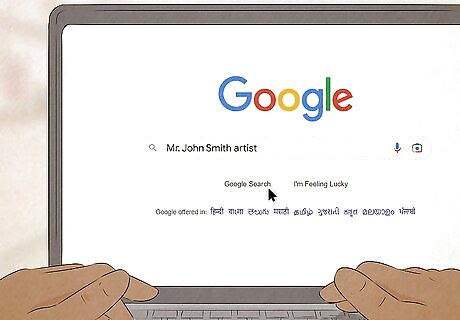
Google the user who owns that playlist. Many curators of popular Spotify playlists have online presences beyond Spotify, and you may be able to find them on another platform with a quick Google search. Do a little digging and find their contact information or a platform through which you can message them, like Instagram or Twitter. Then, reach out and ask them to feature your song on the playlist. When you ask for the feature, describe your song and its genre, as well as yourself as an artist. Also, use polite, humble language—you’re asking a stranger for a favor, after all.
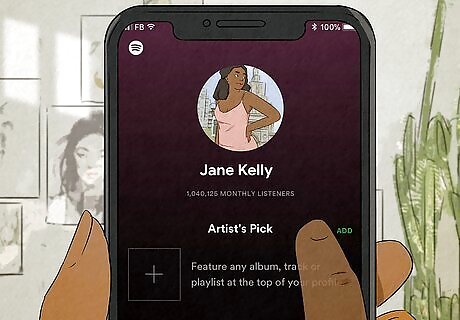
Add your artist’s picks to your artist profile to get on Discover Weekly. Spotify makes personalized recommendations to individual users via its Discover Weekly algorithmic playlist. These recommendations take into account what artists other users often listen to together. By adding artist’s picks to your profile, you create a link between yourself and another artist, which makes your profile more likely to be recommended to users who already listen to that artist. Taking advantage of this function also helps you build relationships with other artists, which builds associations and helps you grow your following in the long run.
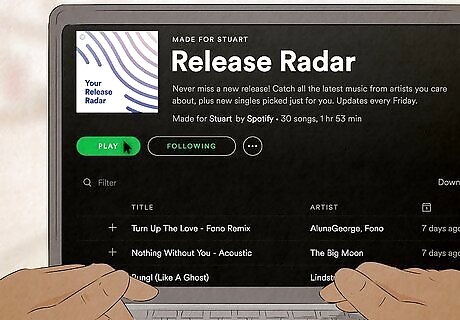
Gain Spotify followers to show up on the Release Radar playlist. The Release Radar, while still algorithmic, is a bit more reliable: If a user is following you, they’re more likely to be recommended your new music on their Release Radar when the playlist refreshes each Friday. So the best way to get on the Release Radar is simply to build your Spotify following—encourage users to follow you via Instagram, Twitter, or other social media. In addition, regularly releasing music in the form of singles and EPs is a great way to let fans know you’re active, as well as up your chances of landing on the Release Radar.
Expanding Your Following
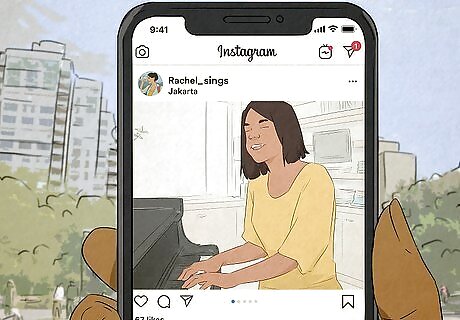
Establish your social media presence. Make accounts on Instagram, Twitter, TikTok, and other sites, and post regularly to build your following, promote your music, and let people know who you are as an artist. As you grow your online presence, continually direct your fans and followers to your Spotify profile, and encourage them to interact with your music there. By now you’ve probably caught on to the fact that building a following is a positive feedback loop: the more followers you have, the more streams you’ll get, the more likely you are to be featured on playlists, which will give you more followers in return. But you need to start someplace, and that place is social media.
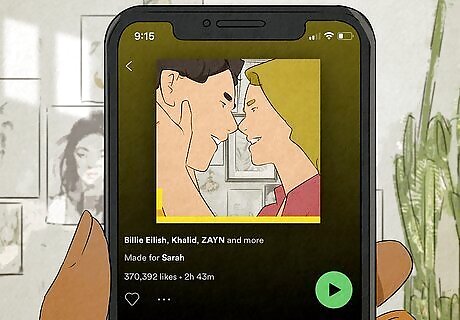
Build your own Spotify playlists. Compile playlists that feature bands and songs that you feel are similar to your own, and be sure to include plenty of your own music on the playlist, as well. This helps associate your own music with other artists and build connections with other musicians. Promote your playlist on social media, notify other bands that you’ve added them, and even ask them to add you to their own playlists, in return. Also encourage your followers to add your music to their own playlists, which is a great way to spread your work through smaller (but no less valuable) channels.

Perform live shows. Things weren’t always digital in the world of music, and Spotify’s Head of Music Strategy (the guy who makes those big playlist decisions) has himself encouraged musicians to get out and perform in front of people in order to build a following. A personal, live connection can build a base of more loyal and devoted fans. Contact your local music venues or event spaces and provide them with a sample of your music as you ask them about the possibility of playing a show there. Remember to list any live gig you’ll play on your Spotify profile, so that fans know where they can find you.













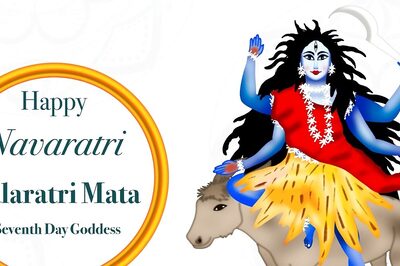






Comments
0 comment